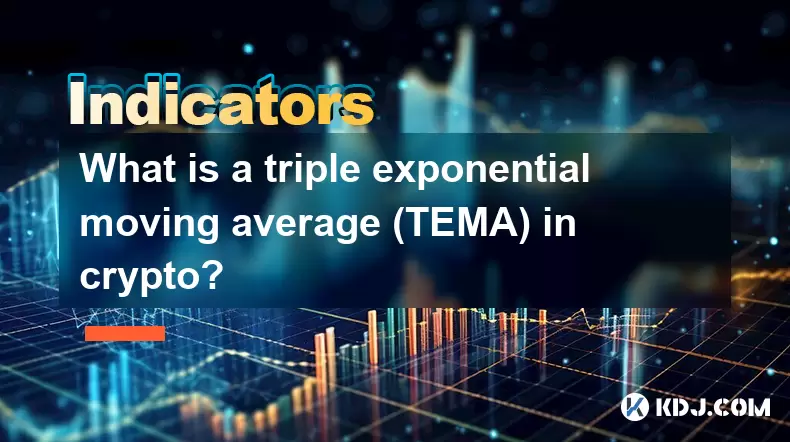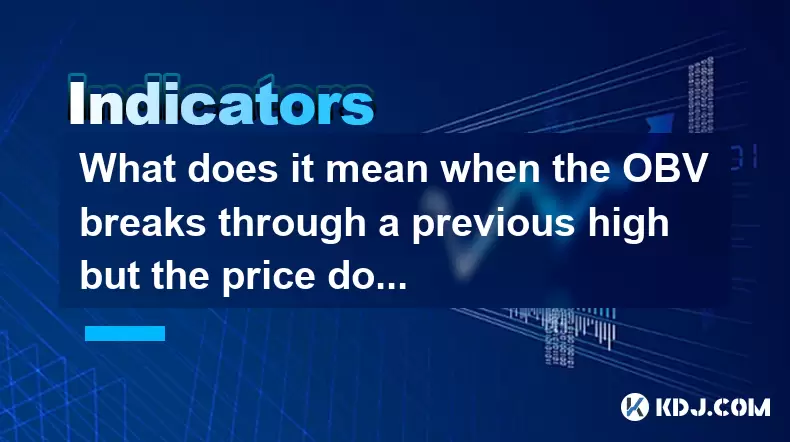-
 Bitcoin
Bitcoin $116700
0.24% -
 Ethereum
Ethereum $3973
4.34% -
 XRP
XRP $3.283
7.68% -
 Tether USDt
Tether USDt $1.000
0.01% -
 BNB
BNB $789.8
2.27% -
 Solana
Solana $176.2
3.31% -
 USDC
USDC $0.9999
0.00% -
 Dogecoin
Dogecoin $0.2238
5.14% -
 TRON
TRON $0.3389
-0.51% -
 Cardano
Cardano $0.7907
4.03% -
 Stellar
Stellar $0.4527
10.02% -
 Hyperliquid
Hyperliquid $41.07
4.27% -
 Sui
Sui $3.794
1.77% -
 Chainlink
Chainlink $19.49
10.40% -
 Bitcoin Cash
Bitcoin Cash $580.9
0.74% -
 Hedera
Hedera $0.2617
4.32% -
 Avalanche
Avalanche $23.41
3.67% -
 Ethena USDe
Ethena USDe $1.001
-0.03% -
 Litecoin
Litecoin $122.4
1.38% -
 Toncoin
Toncoin $3.364
1.49% -
 UNUS SED LEO
UNUS SED LEO $8.988
0.37% -
 Shiba Inu
Shiba Inu $0.00001295
2.82% -
 Uniswap
Uniswap $10.62
5.75% -
 Polkadot
Polkadot $3.922
4.46% -
 Dai
Dai $1.000
0.01% -
 Bitget Token
Bitget Token $4.494
2.15% -
 Monero
Monero $268.0
-1.30% -
 Cronos
Cronos $0.1523
3.68% -
 Pepe
Pepe $0.00001127
4.43% -
 Aave
Aave $285.4
4.85%
What is a triple exponential moving average (TEMA) in crypto?
The Triple Exponential Moving Average (TEMA) reduces lag in crypto price trends by combining three EMAs, offering faster, smoother signals for identifying trend direction and reversals.
Aug 07, 2025 at 03:43 pm

Understanding the Triple Exponential Moving Average (TEMA)
The Triple Exponential Moving Average (TEMA) is a technical indicator used in cryptocurrency trading to reduce lag and provide smoother trend signals compared to traditional moving averages. Unlike the Simple Moving Average (SMA) or the Exponential Moving Average (EMA), TEMA applies multiple layers of smoothing to minimize the noise caused by price volatility. This makes it particularly useful in the highly volatile crypto markets, where price swings can generate misleading signals. The core idea behind TEMA is to eliminate the lag inherent in standard moving averages by incorporating not just one, but three exponential moving averages and adjusting for their lag components.
Mathematical Construction of TEMA
The formula for TEMA involves several steps that combine multiple EMAs to produce a refined output. The calculation is based on the following components:
- EMA1: The first EMA of the closing price over a specified period (e.g., 10 periods).
- EMA2: The EMA of EMA1 over the same period.
- EMA3: The EMA of EMA2 over the same period.
Once these are computed, TEMA is derived using the formula:
TEMA = (3 × EMA1) − (3 × EMA2) + EMA3
This formula effectively removes the lag associated with single and double smoothing by counteracting the delay introduced in each EMA layer. The result is a faster-reacting moving average that stays closer to the actual price action, making it more responsive to sudden shifts in crypto prices.Application of TEMA in Crypto Trading
In cryptocurrency trading, TEMA is primarily used to identify trend direction and potential reversal points. Traders apply TEMA to price charts of assets like Bitcoin (BTC) or Ethereum (ETH) to determine whether the market is in an uptrend or downtrend. When the price is consistently above the TEMA line, it suggests a bullish trend. Conversely, when the price trades below TEMA, it indicates bearish momentum. Because TEMA reacts more quickly than traditional moving averages, it helps traders enter trends earlier and exit before reversals become pronounced. This is especially valuable in crypto, where trends can develop and reverse rapidly due to market sentiment and macroeconomic factors.Using TEMA for Crossover Strategies
One of the most common ways traders use TEMA is through crossover strategies. These involve comparing the TEMA line with the actual price or another moving average to generate buy or sell signals. For example: - A bullish signal occurs when the crypto price crosses above the TEMA line, suggesting upward momentum is building.
- A bearish signal appears when the price crosses below the TEMA line, indicating potential downward movement.
Alternatively, traders may use a dual-TEMA setup: - A short-term TEMA (e.g., 10-period) crossing above a long-term TEMA (e.g., 50-period) generates a buy signal.
- The opposite crossover signals a potential sell opportunity.
These strategies benefit from TEMA’s reduced lag, allowing traders to react more swiftly than they could with SMA or standard EMA crossovers.Configuring TEMA on Trading Platforms
Setting up TEMA on popular crypto trading platforms like TradingView, Binance, or Coinbase Advanced Trade is straightforward. Follow these steps: - Open the chart for the desired cryptocurrency pair (e.g., BTC/USDT).
- Navigate to the "Indicators" section and search for "Triple Exponential Moving Average."
- Select TEMA and adjust the period length—common settings include 10, 20, or 50 periods depending on trading style.
- Customize the line color and thickness for better visibility.
- Apply the indicator to the chart.
Once applied, the TEMA line will appear overlaid on the price chart. Traders can then use visual analysis or combine it with other tools like Relative Strength Index (RSI) or MACD to confirm signals. It’s essential to backtest the TEMA configuration on historical data to assess its effectiveness for a specific crypto asset, as volatility and liquidity vary across coins.Limitations and Considerations
While TEMA offers improved responsiveness, it is not immune to false signals, especially in sideways or choppy markets. Cryptocurrencies often experience consolidation phases where price oscillates within a range, leading to multiple whipsaws when using TEMA crossovers. To mitigate this, traders should: - Use TEMA in conjunction with volume indicators to confirm the strength of a move.
- Apply it on higher timeframes (e.g., 4-hour or daily charts) to filter out noise.
- Avoid relying solely on TEMA; combine it with support/resistance levels or candlestick patterns.
Additionally, TEMA’s sensitivity means it can overreact to short-term spikes caused by news events or whale movements, which are common in crypto. Therefore, risk management—such as setting stop-loss orders—is crucial when acting on TEMA-based signals.Frequently Asked Questions
Q: How does TEMA differ from the Double Exponential Moving Average (DEMA)?
A: TEMA uses three layers of EMA and a more complex formula to further reduce lag compared to DEMA, which only uses two. While DEMA = (2 × EMA1) − EMA2, TEMA adds a third EMA and adjusts with (3 × EMA1) − (3 × EMA2) + EMA3, making it even more responsive to price changes.Q: Can TEMA be used for scalping in crypto?
A: Yes, TEMA is suitable for scalping due to its fast reaction time. Traders often use a 5- or 10-period TEMA on 1-minute or 5-minute charts to catch short-term momentum shifts, especially during high-volume periods like exchange listings or macroeconomic announcements.Q: Is TEMA effective for low-cap altcoins?
A: TEMA can be applied to low-cap altcoins, but caution is advised. These coins often exhibit erratic price movements and low liquidity, increasing the risk of false signals. Combining TEMA with volume analysis and order book depth improves reliability.Q: Does TEMA work better on specific timeframes?
A: TEMA performs well across timeframes, but its effectiveness varies. On shorter timeframes (e.g., 15-minute), it provides timely signals but with more noise. On daily or weekly charts, it offers stronger trend confirmation with fewer false entries, making it ideal for swing or position traders.
Disclaimer:info@kdj.com
The information provided is not trading advice. kdj.com does not assume any responsibility for any investments made based on the information provided in this article. Cryptocurrencies are highly volatile and it is highly recommended that you invest with caution after thorough research!
If you believe that the content used on this website infringes your copyright, please contact us immediately (info@kdj.com) and we will delete it promptly.
- Solana, Litecoin, Remittix: Unpacking the Latest Crypto Trends
- 2025-08-09 09:30:12
- Bitcoin Cash, AIXA Miner, and Daily Income: A New Yorker's Take
- 2025-08-09 09:30:12
- Trump, Crypto, and Public Companies: A New York Minute on Digital Finance
- 2025-08-09 09:50:12
- Trump's 401(k) Crypto Revolution: Is Your Retirement Ready?
- 2025-08-09 09:50:12
- Coinbase, DEX Trading, and Self-Custody: A New Era for Crypto?
- 2025-08-09 09:55:11
- Trump Family, Crypto Ventures, and Stablecoins: A New York Minute on USD1
- 2025-08-09 09:55:11
Related knowledge

What does it mean when the Williams' oscillator repeatedly hits bottoms but fails to rebound?
Aug 09,2025 at 09:28am
Understanding the Williams %R OscillatorThe Williams %R oscillator, developed by Larry Williams, is a momentum indicator used in technical analysis to...

When the J line in the KDJ indicator suddenly turns downward after being continuously overbought, does it indicate a top?
Aug 09,2025 at 06:35am
Understanding the KDJ Indicator and Its ComponentsThe KDJ indicator is a momentum oscillator widely used in cryptocurrency technical analysis to ident...

What does it mean when the TRIX indicator suddenly diverges downward after a long period of convergence?
Aug 09,2025 at 12:56am
Understanding the TRIX Indicator in Cryptocurrency TradingThe TRIX indicator, or Triple Exponential Average, is a momentum oscillator used in technica...

What does it mean when the OBV breaks through a previous high but the price doesn't reach a new high?
Aug 09,2025 at 07:57am
Understanding the On-Balance Volume (OBV) IndicatorThe On-Balance Volume (OBV) is a technical analysis indicator that uses volume flow to predict chan...

Why is the rise limited after a MACD bottoming divergence?
Aug 09,2025 at 12:07am
Understanding MACD Bottoming Divergence in Cryptocurrency TradingThe MACD (Moving Average Convergence Divergence) is a widely used technical indicator...

What does it mean when the OBV continues to rise but the price is trading sideways?
Aug 08,2025 at 10:35pm
Understanding On-Balance Volume (OBV)On-Balance Volume (OBV) is a technical indicator that uses volume flow to predict changes in stock or cryptocurre...

What does it mean when the Williams' oscillator repeatedly hits bottoms but fails to rebound?
Aug 09,2025 at 09:28am
Understanding the Williams %R OscillatorThe Williams %R oscillator, developed by Larry Williams, is a momentum indicator used in technical analysis to...

When the J line in the KDJ indicator suddenly turns downward after being continuously overbought, does it indicate a top?
Aug 09,2025 at 06:35am
Understanding the KDJ Indicator and Its ComponentsThe KDJ indicator is a momentum oscillator widely used in cryptocurrency technical analysis to ident...

What does it mean when the TRIX indicator suddenly diverges downward after a long period of convergence?
Aug 09,2025 at 12:56am
Understanding the TRIX Indicator in Cryptocurrency TradingThe TRIX indicator, or Triple Exponential Average, is a momentum oscillator used in technica...

What does it mean when the OBV breaks through a previous high but the price doesn't reach a new high?
Aug 09,2025 at 07:57am
Understanding the On-Balance Volume (OBV) IndicatorThe On-Balance Volume (OBV) is a technical analysis indicator that uses volume flow to predict chan...

Why is the rise limited after a MACD bottoming divergence?
Aug 09,2025 at 12:07am
Understanding MACD Bottoming Divergence in Cryptocurrency TradingThe MACD (Moving Average Convergence Divergence) is a widely used technical indicator...

What does it mean when the OBV continues to rise but the price is trading sideways?
Aug 08,2025 at 10:35pm
Understanding On-Balance Volume (OBV)On-Balance Volume (OBV) is a technical indicator that uses volume flow to predict changes in stock or cryptocurre...
See all articles

























































































